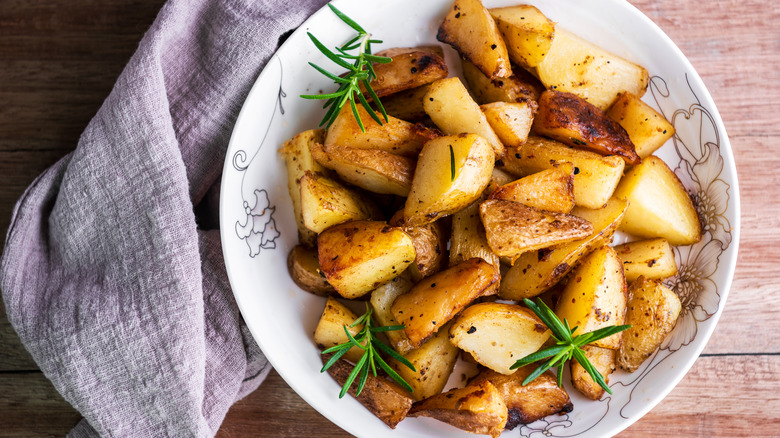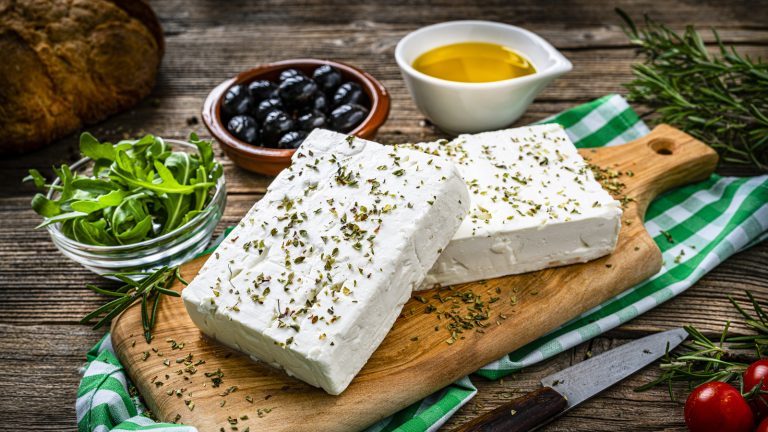We’re willing to bet that most of you have, at one time or another, left a bag of potatoes in your store cupboard for a little too long. There are always a few stragglers that get left behind, destined for the trash can. The more waste-conscious among you might have tried freezing those leftover spuds — and if you left them raw or whole, you probably ended up with a grainy, mushy mess. But the truth is, you can freeze potatoes — if you do it the right way. With a few quick prep steps, you can upgrade your freezing game and never let potatoes go to waste again.
Most people freeze potatoes raw, and that’s where they go wrong. Spuds have a high water content, and when frozen, that water turns into ice, which expands, rupturing the cell walls of the potato and ruining its texture. As those walls burst, they release enzymes that cause browning and leave behind a sad, soggy consistency. The fix? Blanching. Cook them first with a quick bath in boiling water, then transfer them straight into an ice bath. Dry thoroughly, spread them on a tray, cover, and freeze.
The best ways to prep potatoes to freeze
The potato is one of cooking’s true heroes — delicious and versatile in equal measure. Some preparations, though, work better than others. Cubing potatoes, as though you were about to roast them, is a great place to start. Ideal for quick, easy sheet-pan dinners or a classic breakfast hash, you’ll want to cut your potatoes into cubes (or rough chunks, if you’re feeling rustic) and blanch them for five minutes or so before freezing. Then, when it’s time to cook, just give them a drizzle of oil, a good season, and roast away.
Mashed potatoes freeze well, too. Make your mash as you usually would, folding in plenty of good-quality butter from the grocery store, and portion it into freezer bags or airtight containers. When you’re ready to eat, reheat in the microwave or on the stovetop with a bit more butter, milk, or heavy cream to restore the right consistency.
Perhaps the most commonly frozen type of potato dish, the french fry is also one of the easiest to preserve. Prep them as you normally would, and give them a quick blanch in boiling water (with a little added vinegar to help retain texture) for a few minutes until just tender. Then dry thoroughly and spread on a baking sheet before freezing. Yukon Gold and Russet potatoes are best for fries — and best for freezing.
Some common mistakes to avoid for freezing success
Though freezing potatoes is simple, use these tips to avoid common mistakes. The big one — freezing them raw — we’ve already covered, but water content can cause problems elsewhere too. Not drying your potatoes after blanching can ruin the texture. Any water left behind will expand as it freezes, leading to a soft, mushy mess. Freezing them uncovered can cause the same issue — always make sure your potatoes are securely covered or placed in resealable freezer bags to keep them dry.
Speaking of freezer bags, don’t overfill them! Overstuffed bags can lead to freezer burn and cause the potatoes to clump together, making them harder to use later. Instead, freeze smaller batches that you’ll actually eat in one go, and remove as much air as possible before sealing. A good trick is to use a straw to suck out the excess air — this helps avoid oxidation and ice buildup.
Finally, use your frozen potatoes in a timely manner. While the freezer does preserve food fantastically, it’s best to use potatoes within two to three months to maintain their texture and flavor. Cook them straight from frozen (just like other pre-prepped frozen veggies) for the best results.







